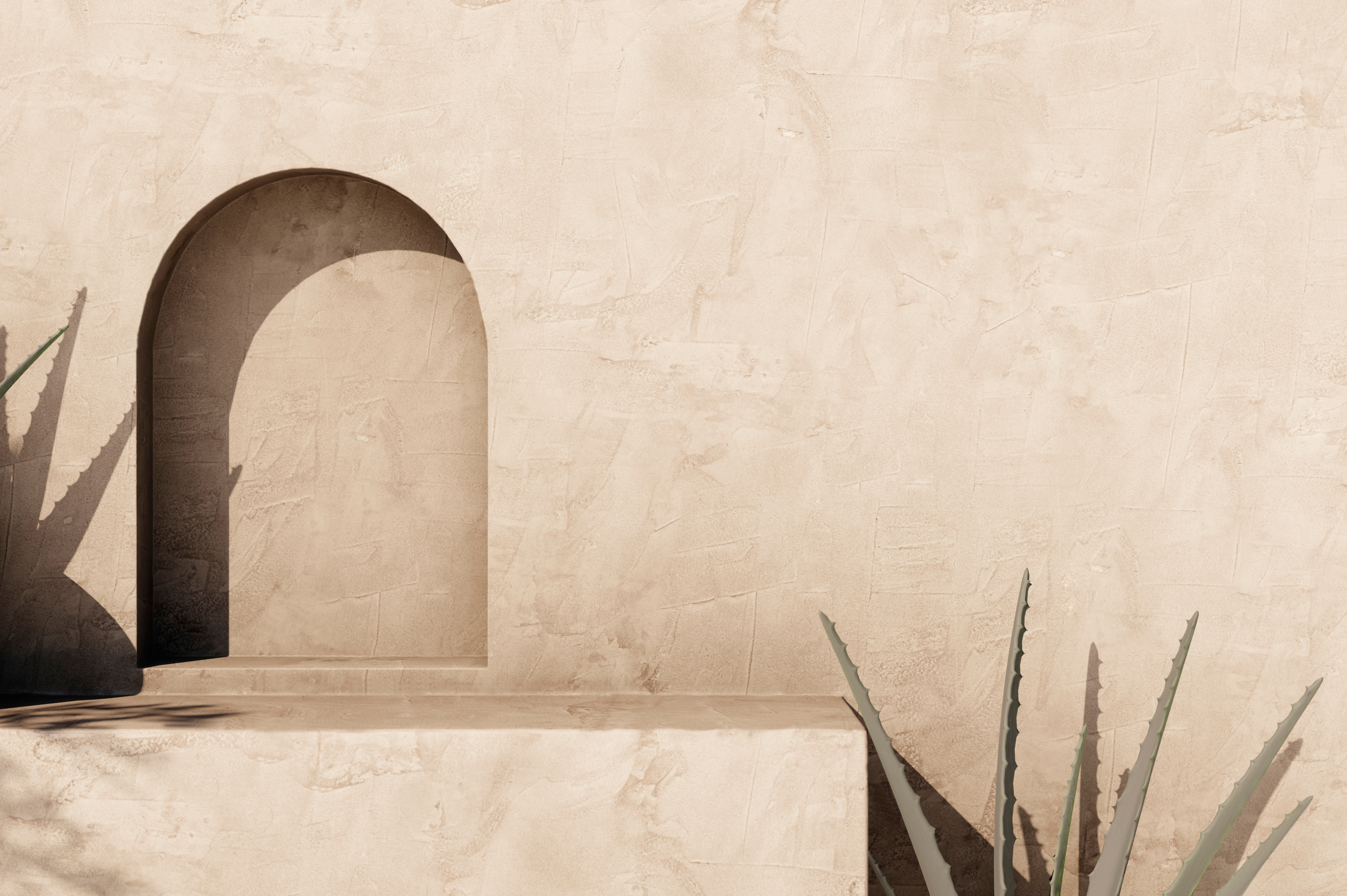Made from a mix of sand and clay, the material is primarily used in renovations of historical buildings, but is increasingly being applied in everyday interior design as a way to combat the oversized carbon footprint of the construction industry.
Plastering and rendering are two construction techniques used to cover and finish surfaces of walls and ceilings. Main difference is that clay plasters are used for interior surfaces and finishes, and clay renderings are used for exterior surfaces and finishes. The material used for plastering and rendering can vary widely.This blog post will describe clay plastering.
Clay plaster is a natural building material and can be applied to a variety of surfaces like: Clay-based substrates (adobe, cob or rammed earth walls), wood, straw bales, bricks, stone and more, but it also has limitations so surfaces consistently exposed to high levels of moisture or surfaces that are impermeable with more, should be avoided.
But it’s not just the planet that benefits - clay plaster is ideal for building homes that support the occupants’ health. Let’s explore the advantages of this material and look at best practices for working with it.
The many benefits of clay plaster
One advantage of clay plaster is that it’s free of toxins, so it does not contain volatile organic compounds - chemicals which are released into the air and can be harmful to human health. So it improves the air quality in the building.
Another major benefit of the material is that it’s highly breathable and able to regulate humidity, keeping it at 40-60% (which is the recommended level for buildings). When humidity rises, the clay plaster absorbs moisture, which it then releases when the humidity drops. This helps minimize the effects of respiratory illnesses like asthma, as well as stopping viruses from spreading and preventing mould from developing.
Clay plasters are durable, and will last as long as the buildings they’re applied to. However, if repairs are needed, they are very easy to carry out.
In terms of aesthetics, clay plasters have a unique, natural appearance. They can be coloured if desired using natural pigments, and the plaster can be sculpted into any shape.
Finally, clay plaster can also make rooms more sound reduced - which is often highly desirable in buildings with many occupants.
Clay plaster’s sustainability
Using clay plaster can dramatically lower the embodied carbon of buildings. Compared to other plasters - such as cement - it has a substantially reduced environmental impact throughout its entire life cycle.
Firstly, when the clay is extracted from soil, no deep mining - which harms the surrounding environment and contributes to biodiversity loss - is required. In fact, this abundant raw material is dug up all the time anyway - in building and making tunnels, for example - meaning we can make use of something that would otherwise be going to waste. Plus, since clay can be sourced locally, this minimizes transport emissions (it CAN be as local as your own garden, but unless you are a professional we recommend to buy clay soil from professional manufacturers).
In the manufacturing phase, very little energy is needed to process clay plaster. In contrast, plasters that contain lime must be burnt at an extremely high temperature (up to 1250°C) adding cement to the lime plaster will increase as cement is also burnt at (up to 1500°C), consuming a huge amount of energy and contributing to carbon emissions. Since clay plaster is unprocessed, it doesn’t have this harmful ecological cost attached.
Applying clay plaster can also ensure homes are far more sustainable over the course of their lifetimes. With a high thermal mass, it can improve energy efficiency, keeping buildings warm with less reliance on central heating. And, at the end-of-life, clay plaster can be composted and returned to the earth, as it is 100% biodegradable - it is a truly circular material.
Mixing clay plaster
Clay plaster is easily mixed in a Forced Action Mixer, or for smaller quantities with mixing paddles (the SoRoTo SCREW series or the Expert Positive will do the job). When choosing the size of forced action mixer, your average output volume should be an indicator.
SoRoTo has the widest range of Forced Action Mixers, from 40 liter to 300 liter. The standard arms for a Forced Action Mixer will do the job, as there is no small stone or rocks in the mix. Should you have a special mix with stones larger than 8mm, we recommend changing to our rubber paddle mixing arms.
Our Forced Action Mixers gear/motor combination has been chosen with focus for maximum effect, but with lowest possible amps used – so you can plug them to power in places with “minimum” electricity available.
Clay plaster is made from one part clay and two parts sand, and may also include a natural fibre like straw to increase its strength. To quickly create clay plaster, add these materials to a forced action mixer and dry mix, then add clean tap water slowly as required. Follow instructions from manufacturer of material.
There is a wide range of possibilities for post-processing the clay plaster, like coloring, burnishing, pigmenting or various types of decoration.
Working with clay plaster
As mentioned in the beginning, clay plaster is suitable for indoor use, but because it’s sensitive to direct exposure to water, it shouldn’t be used around showers or sinks. If applied to wood be sure that the wood is properly prepared and sealed to prevent moisture – if applied to metal you might need to install a mesh or lath before applying clay plaster.
To apply clay plaster, first make sure the surface is clean and free from dust, and slightly moisten it. Then, the plaster can be applied with a trowel or spray machine. The SoRoTo H-Buckets is an excellent tool when applying the plaster, as they increase working height and can be loaded with plaster from a wheelbarrow. Extraction from a Forced Action Mixer to a wheelbarrow is easy with the legs height adjustment possibilities (see more ergonomics tips here).
Surfaces with good porosity will only need one layer of plaster. If two layers are required, they should be applied twelve hours apart.
Easy to use and with a negligible environmental impact, masons may want to consider incorporating this circular material into their work. By doing so, the construction sector can build safe and healthy homes while playing a key role in bringing about a more sustainable future.
____________________
Disclaimer: The following blog text contains guidelines regarding clay plaster and how to mix it as communicated by the company SoRoTo. However, it is important to note that these guidelines are for informational purposes only and should not be considered as a substitute for the manufacturer's guidelines. SoRoTo recommends that users always refer to the manufacturer's instructions and guidelines for their specific product to ensure proper and safe usage. SoRoTo will not be held liable for any damages or injuries that may result from the misuse or improper application of their guidelines.























